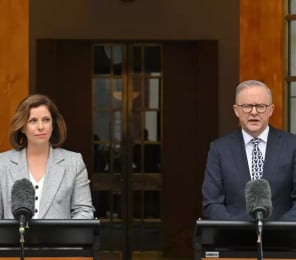Aged care accountancy specialists StewartBrown have released their analysis of the Australian Government's proposed residential aged care funding reforms, confirming the new funding will only begin to flow in three years' time from FY29, and modelling shows the Hotelling Supplement may fall short of meeting the actual costs of delivering services.
"It's a good start," Grant Corderoy, Senior Partner at StewartBrown, told The SOURCE.
Grant was a member of the Government's Aged Care Taskforce, which in December 2023 provided the Government with 23 recommendations to improve the aged care sector's sustainability.

Senior Partner at
StewartBrown
The analysis shows the residential aged care funding reforms, which will only be fully phased in by FY29, will then begin earning an EBITDA of between $18,000 and $20,000 per bed per annum.
This $20,000 figure represents a return on capital of 4% per annum, which is the return needed to ensure the long-term sustainability of the sector and build the beds required to meet future demand, according to Grant.
"This should be the starting point, not the end point for the residential aged care sector to have long term viability," the StewartBrown report notes.
The report also provides projected operating results for each of the Modified Monash Model (MMM) areas.
Only MMM1 homes (metropolitan homes) will achieve the important $20,000 threshold by FY29, according to StewartBrown's projections – suggesting that operators in regional, rural and remote areas won't be able to embark on new beds like their metro counterparts.
Another $7 per day required for Hotelling Supplement: StewartBrown
The report points out the Independent Health and Aged Care Pricing Authority (IHACPA)'s data contained in the Residential Aged Care Pricing Advice 2024-25, which is based on 2021-22 results for the aged care sector, indicate a "gap" of $4.30 for the Hotelling supplement in FY25.
StewartBrown estimates that a further $7 per bed per day may be required to "fully meet" the actual cost of delivering services.
In their analysis, StewartBrown models three scenarios: Scenario 1 uses a Hotelling supplement of $14.92, the RAD retention of 2%, RAD pricing increased by CPI annually, and DAP pricing based on an 8% per annum floor.
Scenario 2 is the same except the RAD is increased by 10% per annum (so providers are regularly raising their RADs), and Scenario 3 has a Hotelling Supplement that meets the "actual cost of providing everyday living services" starting at $22.41 (so if the Government makes up the current forecast $7 shortfall) and is otherwise the same as Scenario 2.
Based on this modelling, operators would receive $14.70 per bed per day under Scenario 1 by FY29 (see main image). But under Scenario 2, this operating result would increase to $24.14 while Scenario 3 would deliver $32.06, more than double the amount in Scenario 1.
In short, all residential aged care operators should benefit from increased funding under the reforms – but those that increase their RADs will see a greater result.
"The financial modelling... supports the reforms to date and after the three year phasing in period there should be a greater level of confidence in the ongoing financial sustainability of the residential aged care sector," the report states.
Read the StewartBrown report here.










